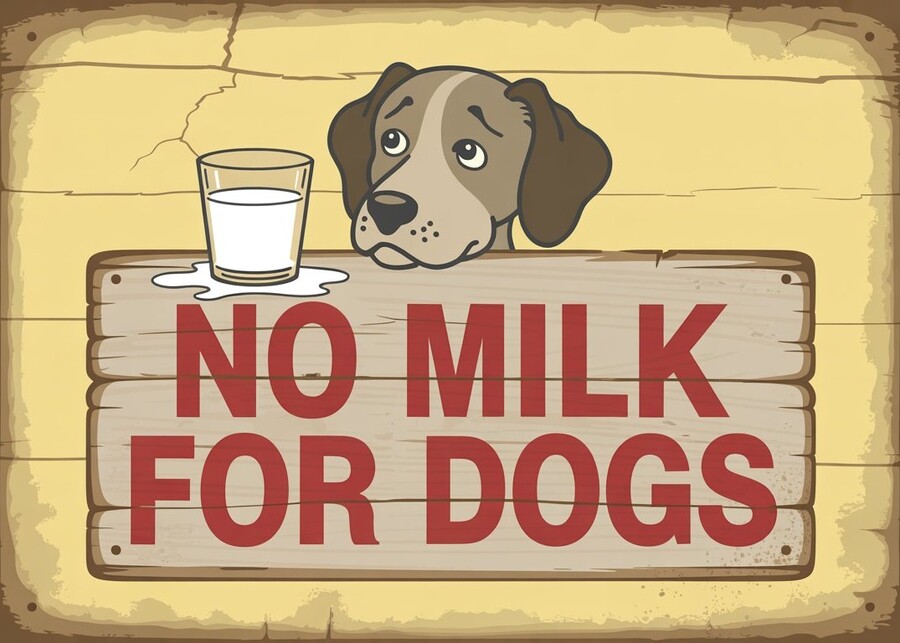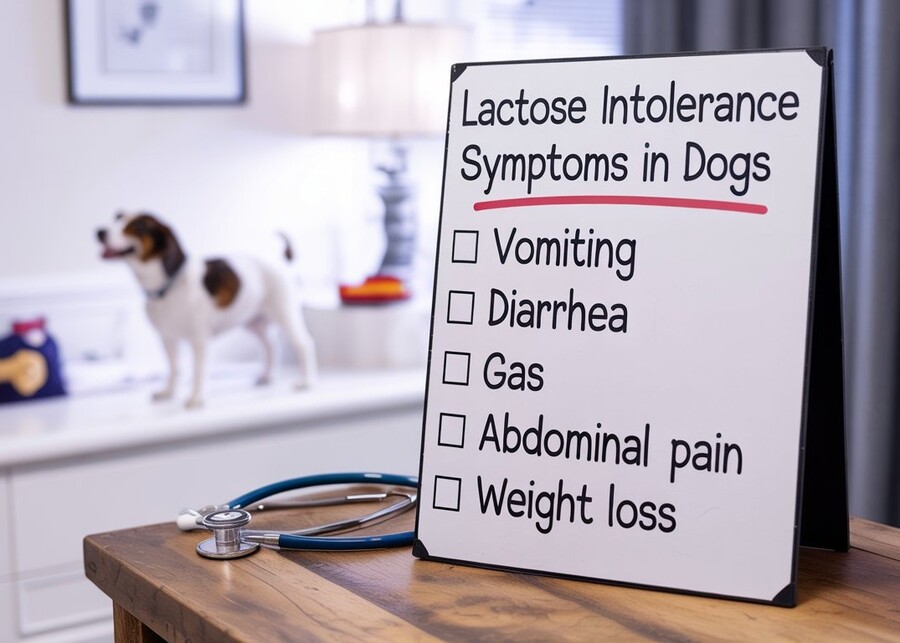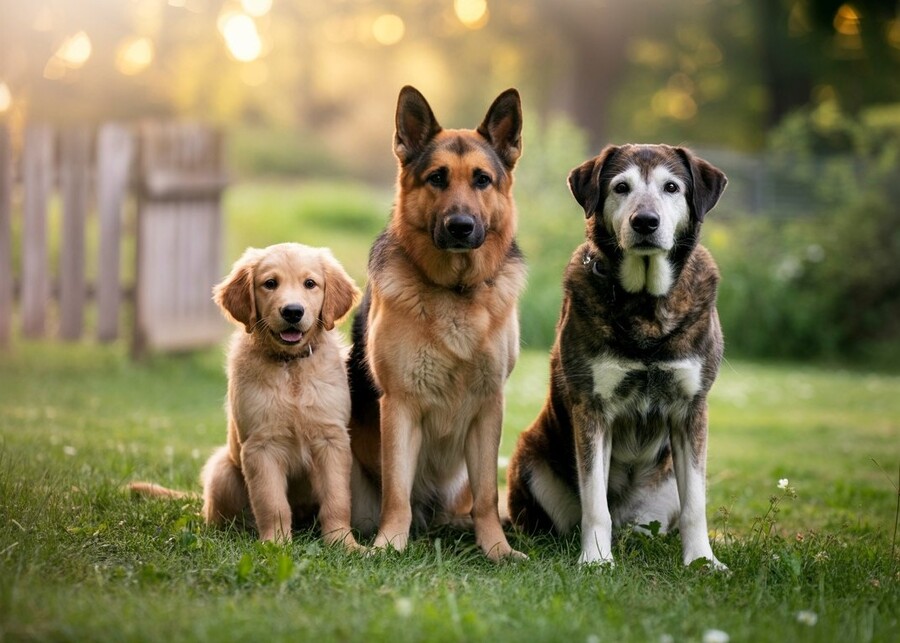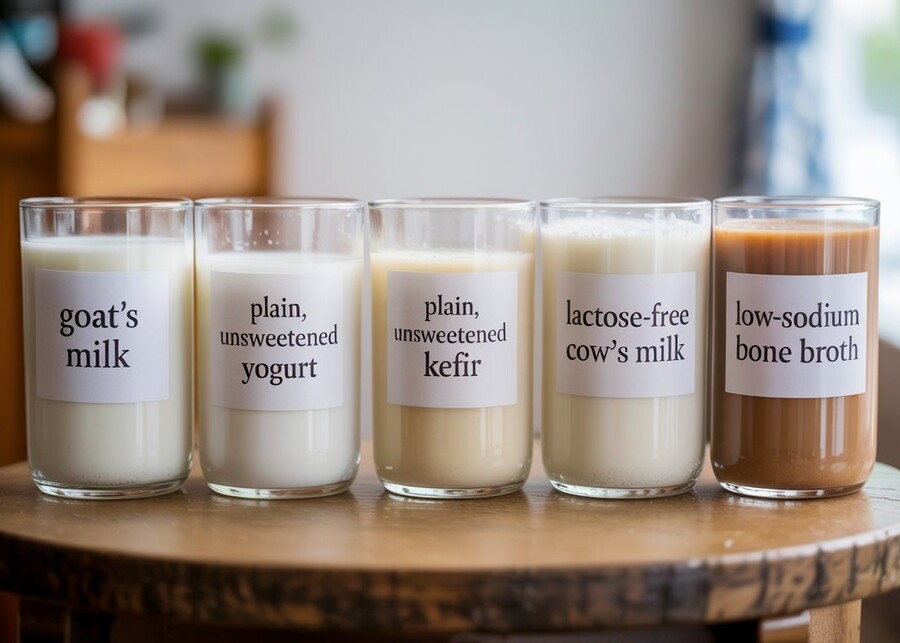That moment your dog looks at you with pleading eyes while you pour a bowl of milk is tough. Sharing our food feels like an act of love, but it can lead to unexpected tummy troubles for them.
For most adult dogs, regular cow’s milk is not recommended. Many dogs are lactose intolerant, meaning they can’t digest the sugar in milk, which can cause digestive upset. Milk also contains fat and calories your dog doesn’t need, and safer, healthier alternatives are readily available.
I’ve spent over a decade in the pet supply industry, and this question comes up all the time. It’s rooted in a desire to give our pets the best, but what feels like a treat can sometimes be a mistake. The truth is, understanding why milk isn’t great for most dogs is the first step to making truly loving and informed choices for their diet. It’s not about what you can’t give them; it’s about discovering all the wonderful things you can give them instead. Let’s dive into the science and the safe alternatives together.
Why Is Milk Often Not Recommended for Dogs?
You’re in a hurry and just want the quick takeaway. I get it. You love your dog and want to make sure you’re not accidentally causing them harm with a seemingly innocent treat.
For the majority of adult dogs, giving them cow’s milk is a bad idea. Their bodies are not designed to digest it properly, and it offers little nutritional benefit while posing several health risks. There are far better ways to treat your furry friend.

To be more specific, here’s a quick breakdown of the main reasons to avoid it:
- Digestive Problems: Most adult dogs lack sufficient amounts of lactase, the enzyme needed to break down lactose (the sugar in milk). This is the primary cause of stomach upset.
- Nutritional Risks: The high-fat content in whole milk can contribute to obesity and, in some cases, trigger pancreatitis—a serious and painful inflammation of the pancreas.
- Better Options Exist: Why risk it? Water is the only fluid your dog needs for hydration. For treats, there are many dog-safe alternatives that provide enjoyment without the potential for gas, diarrhea, and vomiting.
Why Can Milk Be a Problem: A Deep Dive into Lactose Intolerance?
It feels natural to think of milk as wholesome, but for dogs, it’s a different story. The core issue isn’t that milk is "toxic," but rather that a dog’s biology changes significantly after puppyhood.
The main problem is lactose, a sugar found in milk. Puppies produce an enzyme called lactase to break it down, but as they grow up and wean off their mother’s milk, most dogs stop producing it. Without lactase, their body can’t process the lactose.
Think of it this way: lactose is a complex molecule, like a big, locked chain. Lactase is the only key that can unlock it. Puppies are born with plenty of keys, but most adult dogs lose them. When an adult dog drinks milk, the "locked" lactose travels undigested to the large intestine. There, bacteria begin to ferment it, which produces gas and draws water into the gut. This is what leads to the classic symptoms of bloating, gas, and diarrhea. It’s not a disease; it’s simply the normal state for most adult mammals, including many humans.
Furthermore, some dogs might not have a problem with lactose but could still react to proteins in milk, like casein. This can trigger an allergic reaction, which often shows up as itchy skin, rashes, or chronic ear infections. So even if your dog’s stomach seems fine, milk could be causing other, less obvious problems.
Does Your Dog Have Lactose Intolerance? A Practical Checklist
You gave your dog a little milk, and now you’re worried. How can you tell if they’re having a bad reaction? It’s important to know what to look for so you can act accordingly.
Symptoms of lactose intolerance in dogs typically appear within a few hours of consumption and are almost always related to digestive upset. The severity can range from mild discomfort to more serious issues, depending on the dog and the amount of milk they drank.

Here’s a practical checklist to help you identify a potential reaction. I’ve broken it down into two categories so you know when to simply observe and when to be more concerned.
Mild Symptoms (Observe and Monitor)
- Loose Stool: Softer than usual, but not watery diarrhea.
- Gas (Flatulence): More frequent or smellier than normal.
- Stomach Gurgling: You can hear their tummy rumbling loudly.
- Slight Bloating: Their abdomen may seem a little swollen or tight.
What to do: For mild symptoms, just remove milk from their diet completely and ensure they have fresh water. The issues should resolve on their own within a day.
Concerning Symptoms (Contact Your Vet)
- Diarrhea: Watery, frequent, or explosive bowel movements.
- Vomiting: More than once or twice.
- Abdominal Pain: Your dog may whine, cry, hunch over, or not want their belly touched.
- Loss of Appetite: Refusing to eat their regular food.
What to do: If you see these signs, it’s best to call your veterinarian for advice. Severe diarrhea and vomiting can lead to dehydration quickly.
What to Do If Your Dog Reacts Badly: Emergency Steps
Seeing your dog in distress after they’ve had milk can be scary. The most important thing is to stay calm and take clear, simple steps to help them feel better.
If your dog has a bad reaction to milk, immediately stop giving it to them. Provide fresh water, temporarily withhold food to let their stomach settle, and closely monitor their symptoms. Severe reactions require an immediate call to your vet.

Here is a step-by-step guide to follow if your dog is showing signs of distress:
- Remove the Source: The first and most obvious step is to take away any remaining milk. Don’t let them have any more.
- Offer Fresh Water: Dehydration is a risk, especially with diarrhea or vomiting. Make sure they have access to plenty of fresh, clean water, but don’t force them to drink.
- Fast for 12-24 Hours: Withholding food (not water) for a short period can give their gastrointestinal tract a chance to rest and recover. This is generally safe for healthy adult dogs, but you should always consult your vet first, especially for puppies, seniors, or dogs with health conditions.
- Observe and Record: Keep a close eye on your dog. Write down the symptoms you see (e.g., "watery diarrhea at 3 PM," "vomited twice"), how severe they are, and when they started. This information will be extremely helpful for your vet.
CRITICAL WARNING
If your dog shows severe signs like continuous vomiting, bloody diarrhea, extreme lethargy (won’t get up), a very swollen and hard abdomen, or difficulty breathing, this is a medical emergency. Do not wait. Contact your veterinarian or the nearest emergency pet hospital immediately.
Are Some Dogs More Tolerant? Key Factors to Consider
You might be wondering if there are exceptions. Perhaps you’ve heard that some dogs do just fine with milk. While most dogs are better off without it, there are a few factors that can influence tolerance levels.
A dog’s ability to tolerate milk can depend on their age, individual physiology, and the type and amount of milk consumed. However, even for dogs that seem fine, it’s generally not a recommended part of their diet.

Understanding these factors can help you make a more informed decision and avoid potential problems. Let’s break down the most important considerations.
Puppies vs. Adults: Unpacking Their Different Needs?
The most significant factor is age. Puppies and adult dogs have completely different digestive systems when it comes to milk. As I mentioned, puppies are born with the lactase enzyme needed to digest their mother’s milk. This is essential for their survival and growth in the first few weeks of life. However, this ability fades quickly after they are weaned.
Crucially, cow’s milk is a poor substitute for a mother dog’s milk. The nutritional composition is all wrong. Dog’s milk is much higher in protein, fat, and certain minerals, while being lower in sugar (lactose). Giving a young puppy cow’s milk can lead to diarrhea and deprive them of the critical nutrients they need for healthy development. If a puppy needs to be hand-reared, it is vital to use a commercially available puppy milk replacer formula that is specifically designed to mimic their mother’s milk.
Does Breed Matter? A Look at Potential Genetic Differences?
This is a common question, but the answer is straightforward. Currently, there is no strong scientific evidence to suggest that certain dog breeds are genetically more tolerant to lactose than others. While you might hear anecdotal stories about a specific breed handling milk better, this is likely due to individual variation rather than a breed-specific trait.
Instead of focusing on breed, it’s more important to consider the individual dog’s health. For example, breeds that are predisposed to pancreatitis, like Miniature Schnauzers, Cocker Spaniels, and Yorkshire Terriers, should absolutely avoid high-fat foods, including whole milk. The risk of triggering a painful and potentially fatal bout of pancreatitis is simply not worth it. The safest approach is to treat every dog as an individual and assume they are lactose intolerant until proven otherwise.
Summer Hydration vs. Winter Nutrition: Seasonal Considerations?
Some owners think about giving milk for seasonal reasons—a cool treat in the summer or a warm drink in the winter. While the intention is good, there are much better and safer ways to achieve these goals. Milk is not a good choice for hydration; water is always best. And its nutritional profile is not ideal for a winter supplement.
Here are some creative and safe seasonal ideas I recommend to clients:
- Creative Summer Treat: Want to give your dog a cooling treat on a hot day? Freeze some plain, unsweetened yogurt or a bit of goat’s milk in an ice cube tray. It gives them that creamy, frozen treat experience without the high lactose content of cow’s milk. You can even blend it with a bit of dog-safe fruit like blueberries.
- Cozy Winter Warmer: On a cold winter day, a bowl of warm milk might seem comforting, but it’s risky. A much better option is to offer a small amount of warm, low-sodium bone broth. It’s hydrating, gentle on the stomach, and provides a comforting warmth that dogs love, without any of the digestive downsides of milk.
The Ultimate Safe Milk Alternatives Chart for Your Dog
So, cow’s milk is off the table. What can you give your dog instead? There are several great options for an occasional creamy treat, but it’s important to know the pros and cons of each.
Safe alternatives to cow’s milk include goat’s milk, plain kefir or yogurt, and specially formulated lactose-free milks. Always introduce new foods slowly and in small amounts to see how your dog reacts.

IMPORTANT WARNING: Never give your dog any product containing Xylitol, an artificial sweetener found in some dairy products that is extremely toxic to dogs. Also avoid chocolate milk, sugary flavored milks, and alcohol.
Here is a quick-reference chart to help you choose wisely:
| Alternative | Best For… | Potential Risks | Serving Suggestion (for a medium dog) |
|---|---|---|---|
| Goat’s Milk | Dogs with sensitive stomachs. | Lower in lactose but still contains some. Can be high in fat. | 1-2 tablespoons as an occasional treat. |
| Plain, Unsweetened Yogurt | Supporting gut health (probiotics). | Must be plain with no added sugars or sweeteners (especially Xylitol). | 1 spoonful mixed with food. |
| Plain, Unsweetened Kefir | A potent probiotic boost. | Same as yogurt. It’s fermented and tangy, so some dogs may not like the taste. | 1-2 teaspoons to start. |
| Lactose-Free Cow’s Milk | Mimicking the taste of milk safely. | The lactose is removed, but it’s still high in fat and calories with no real nutritional benefit. | 1-2 tablespoons as a rare treat. |
| Low-Sodium Bone Broth | A hydrating, savory treat. | Not a "milk" but a fantastic liquid treat. Ensure it’s low-sodium and onion/garlic-free. | A few tablespoons over food or on its own. |
Key Questions to Ask Your Vet About Your Dog’s Diet
This guide gives you a strong foundation, but nothing replaces personalized advice from a professional who knows your dog. Empower yourself for your next vet visit by having a list of smart questions ready.
Being prepared for your vet appointment ensures you get the most value out of the visit. It helps you build a collaborative relationship with your vet to create the perfect diet for your dog’s specific needs.

Don’t be shy—your vet wants to help! Here are some great questions you can screenshot or write down to take with you:
- "Considering my dog is a [Your Dog’s Breed], is [Age] years old, and weighs [Weight], are there any specific food sensitivities or dietary risks I should be aware of?"
- "I’d like to give my dog some variety beyond their kibble. What ‘human foods’ do you recommend as safe, healthy, low-frequency treats for them?"
- "Are there any signs of food allergies, like skin or ear issues, that you see in my dog that might be related to their diet?"
- "Would my dog benefit from a probiotic supplement to support their gut health? If so, is there a particular type or brand you recommend?"
- "Based on my dog’s current health and activity level, are their calorie and fat intake appropriate?"
Conclusion
Ultimately, loving our dogs means understanding their unique needs. It’s best to skip the cow’s milk and opt for healthier, safer alternatives to show you truly care. Your dog’s long-term health is always worth it.


